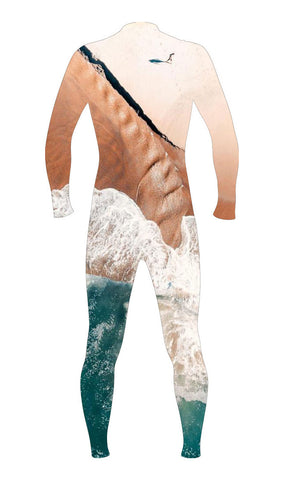Which Style of Wetsuit Is Best?
August 20, 2021 4 min read

Each wetsuit style is designed with climate, temperature and sport in mind. The best suit for you depends on where and how you plan to use it!
From the Steamer to Long Jane there are many variations of wetsuit style, each serving a different temperature range, which is best depends on where you live. Aside from fit, the most important thing to consider is more rubber = more warmth = less stretch. Also, it’s worth noting that you can always cool yourself down inside a wetsuit by opening the neck and flushing cold water into the chest area. Conversely, you can’t really heat them up- unless you have a wetty warmer…
Watch this video from Jacob our resident wetsuit expert to help you decided what style suits your ocean experience best.
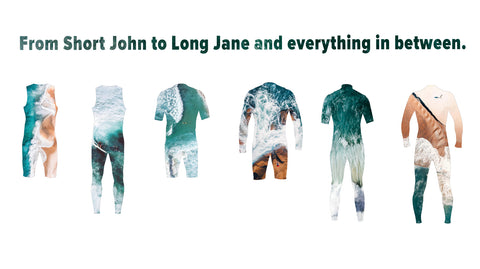
Short John/Jane Wetsuit: Great Flexibility, good in the tropics.
The choice of the old blokes. I don’t mean to sound condescending, in fact, I hope to imply the opposite as I generally feel envy towards those dudes, who wouldn't when you had uncrowded waves to yourself all year round?! Aaand, I know I'm not the only rider to have sat in the lineup, trying to calm the shivers when some OG local paddles out in a short John and proceeds to get all the waves and barely breaks a goosebump... meanwhile I've shivered my 5mm boots off. These wetsuits have no sleeves and are great at keeping your vitals warm and warm vitals mean your body isn’t working hard to keep core temps at 37º. Tropic waters are ideal for Short Johns not for warmth but for comfort as Neoprene provides better barrier against sore ribs and rashes than a typical rashie does. The Short Jane is the same suit but for the ladies.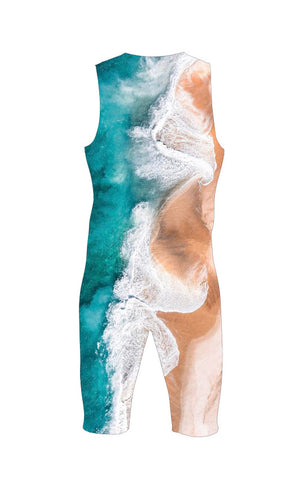
Long John/Jane Wetty: Extra Warmth with great paddling freedom.
The aptly named long John is a short John or Jane with long legs! I find this style of suit harder to pin down to a particular application but both Johns are awesome in the sense you don’t have any rubber on your shoulders, therefore, minimising paddling resistance. This makes Johns ideal for Stand up Paddling [SUP], kayaking, canoeing and anything that requires you to use your arm.. everything?? 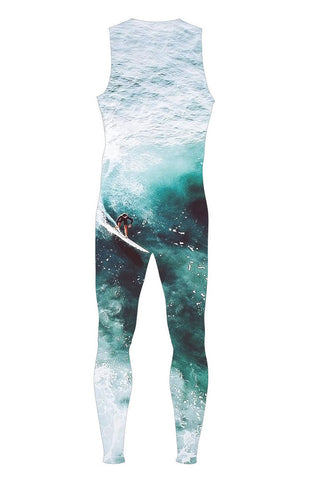
Springsuit: Most versatile wetsuit, transitional comfort.
The Springsuit is one of the two main wetty styles, the other being the steamer. The springsuit is a short-arm short-leg wetsuit designed to keep your core warm but providing flexibility in two key stretch zones: knees and elbows. In Australia a good spring-suit can be worn comfortably almost all year round, depending on how you feel the cold and moreso what type of seam and zip it has. I often wear my springy all through summer because it’s comfy, paddle stretch isn’t an issue and I never rashed, especially on the back of my knees and my soft bits.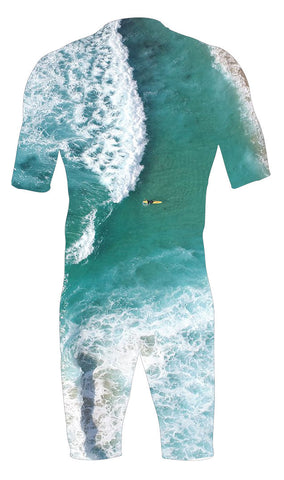
Long-Sleeve Springy: Suited for cold winds, offshores!
The Long sleeve springy is your typical spring suit with full length sleeves. A multi purpose wetty because it cuts the wind chill factor without creating lots of resistance on your knees. Perhaps the most specialist because it’s best suited to areas of warm water but cold air, especially offshore winds… something we don’t get enough of! If you're not using your legs much, mainly in the case of bodyboarders, this is the suit for you. 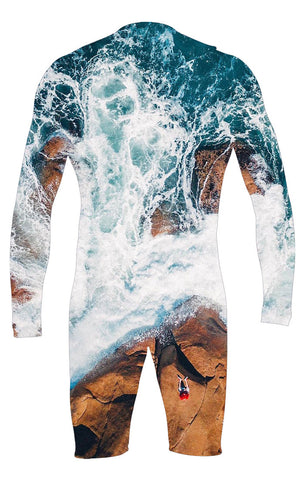
Short Arm Steamer: Warmth with enhanced paddle flex.
As the name suggests, it’s the opposite of the Long Sleeve Springy. This is the best option for surfing through the transitional months of Spring and Autumn. This style is the middle ground between Springsuits and Steamers because it keeps your arms moving freely but your legs toasty! While prone on your board, don’t undergo the same blood flow as they’re not vertically oriented therefore gravity plays a different role but here are many different thoughts on this and most of which employ far more technical knowledge about human physiology and i dare not to weigh in. 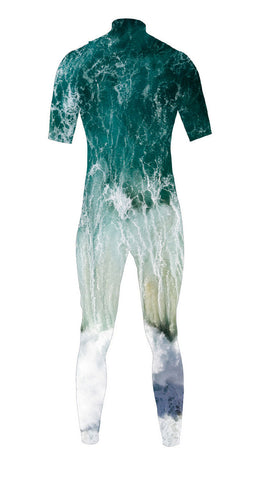
Steamer/Two Piece Wetsuit - Long Sleeve, Long Legs: Warmest Option
The Mumma of all wetsuits! This is probably what you picture when you think wetsuit because it’s most effective at maintaining warmth. Wetsuits have advanced rapidly in recent years, especially with the chest zip, has made steamers the no-brainer for transitional seasons. The difference between paddle flex of spring-suit and a steamer is minimal, especially considering the proliferation of chest-zips in steamers. You may have noted numbers such as 3/2 or 2.5mm, these refer to the thickness of the neoprene. Split thickness wetsuits optimise paddling and warmth by adjusting thickness depending on where it will be on the body. You can expect to find the thicker material in your non-stretch panels, particularly around your vitals. The thinner options will be present in your high-stretch zones- typically shoulders, elbows and knees.
Two-piece wetsuit are most commonly used by divers as they provide optimal warmth and don't have a zip.
